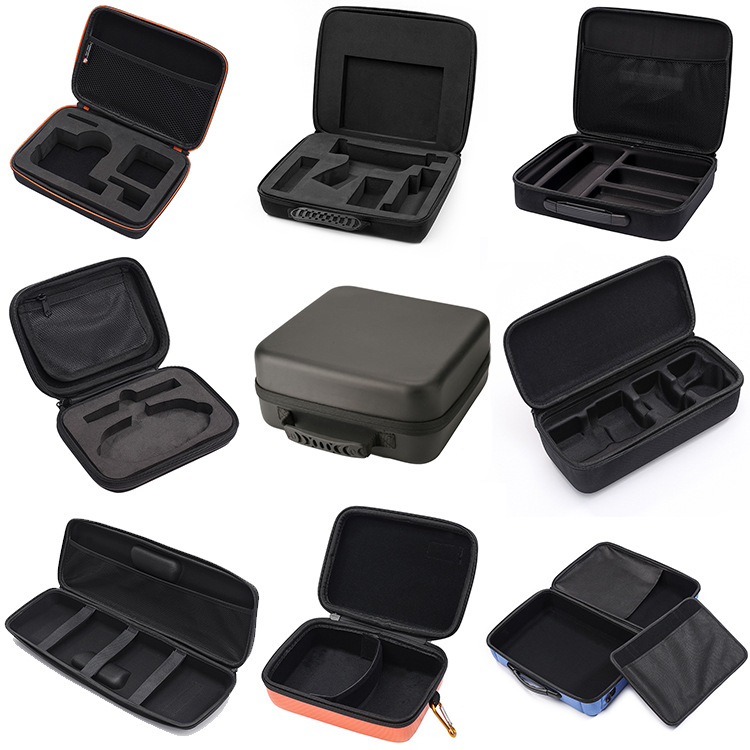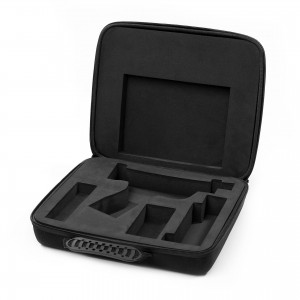Pattern design and plate making of EVA tool bags
In the wave of global trade, EVA tool bags are popular among all kinds of wholesale buyers due to their lightness, durability, waterproofness and shockproofness. Whether it is auto repair tools, hardware tools, or outdoor adventure equipment, EVA tool bags can provide reliable storage and protection. Pattern design and plate making, as the key links in the production of EVA tool bags, not only determine the appearance of the product, but also affect its market competitiveness.
1. The importance of pattern design of EVA tool bags
(I) Brand recognition and market positioning
Pattern design is an important carrier of brand communication. For global wholesale buyers, they often have specific brand image requirements. A unique and creative pattern design can help buyers quickly identify product brands and enhance brand recognition. For example, for high-end tool brands, designing simple and exquisite geometric patterns with advanced colors can highlight the high-end positioning of the brand; while for tool bags for the mass market, using lively cartoon patterns or popular elements can attract more consumers’ attention.
(II) Meeting the needs of different industries
Different tool kit usage scenarios have different requirements for pattern design. In the industrial field, the pattern design of the tool kit needs to be concise and clear, highlighting the classification and function of the tools, so that workers can quickly identify and use the tools. In the field of outdoor adventure, the pattern design can be more creative and personalized, such as using patterns with natural elements and adventure themes to stimulate consumers’ desire to buy.
(III) Improving product added value
Exquisite pattern design can enhance the added value of products. In the fiercely competitive environment of the global market, buyers not only pay attention to the function and quality of the products, but also pay attention to the appearance design of the products. A unique pattern design can become one of the selling points of the product, making the product stand out among many competitors, thereby increasing the added value and profit margin of the product.
II. Key points of EVA tool kit pattern design
(I) Color matching
Color is one of the most important elements in pattern design. The color matching of EVA tool kits needs to consider brand positioning, usage scenarios and target customer groups. Generally speaking, industrial tool kits mostly use dark tones, such as black, gray, dark blue, etc. These colors give people a sense of stability and reliability. Outdoor tool kits can use bright colors such as red, orange, and yellow to increase the vitality and appeal of the product. In addition, color contrast, gradient and other techniques can be used to make the pattern more vivid and layered.
(II) Pattern elements
The selection of pattern elements should match the purpose and brand style of the tool kit. For professional tool kits, tool icons, brand logos and other elements can be used to highlight the professionalism of the product. For children’s tool kits or creative tool kits, cartoon images, animals, plants and other elements can be incorporated to increase the fun and affinity of the product. At the same time, the design of pattern elements should be concise and clear, easy to identify and remember.
(III) Cultural and regional characteristics
In the global market, different countries and regions have different cultural backgrounds and aesthetic concepts. When designing patterns, you can consider incorporating local cultural elements to make the product more regional and more friendly. For example, in the European and American markets, simple and modern design styles are more popular; while in the Asian market, traditional patterns and colors may be more attractive. By understanding the culture of the target market and designing patterns that meet the aesthetic needs of local consumers, the market acceptance of the product can be improved.
3. Plate making process of EVA tool kit
(I) Mold design
The first step of plate making is mold design. According to the pattern design draft, three-dimensional modeling and simulation molding are carried out through computer-aided design (CAD) software. When designing the mold, factors such as the shape, size, and thickness of the pattern need to be considered to ensure that the pattern can be accurately presented on the surface of the tool kit. At the same time, mold design also needs to consider the process requirements in the production process, such as demolding angle, cooling time, etc., to ensure production efficiency and product quality.
(II) Hot pressing molding
Hot pressing molding is the core process of EVA tool kit production. After the EVA material is heated to a certain temperature, it is placed in the mold for hot pressing molding. During the hot pressing process, the pattern is transferred to the surface of the EVA material through the embossing of the mold. The temperature, time and pressure of hot pressing molding are key factors affecting the pattern quality and product molding effect. Too high or too low temperature will cause the pattern to be blurred or the material to deform. Therefore, it is necessary to accurately control the hot pressing parameters according to different pattern designs and material properties.
(III) Printing process
In addition to hot pressing molding, printing technology is also an important means to achieve pattern design. Common printing processes include screen printing, thermal transfer, pad printing, etc. Screen printing is suitable for large-area pattern printing with bright colors and strong layering. Thermal transfer can achieve complex patterns and multi-color printing with high pattern clarity. Pad printing is suitable for printing patterns on curved or irregular surfaces. Choosing the right printing process can achieve the best printing effect according to the requirements of pattern design and the characteristics of the product.
(IV) Quality control
Quality control is crucial in the plate making process. From mold design to product molding, every link requires strict quality inspection. After the mold is made, it is necessary to test the mold and inspect it to ensure the dimensional accuracy and pattern clarity of the mold. During the production process, the pattern quality of the product should be checked regularly.
Post time: Jul-30-2025






